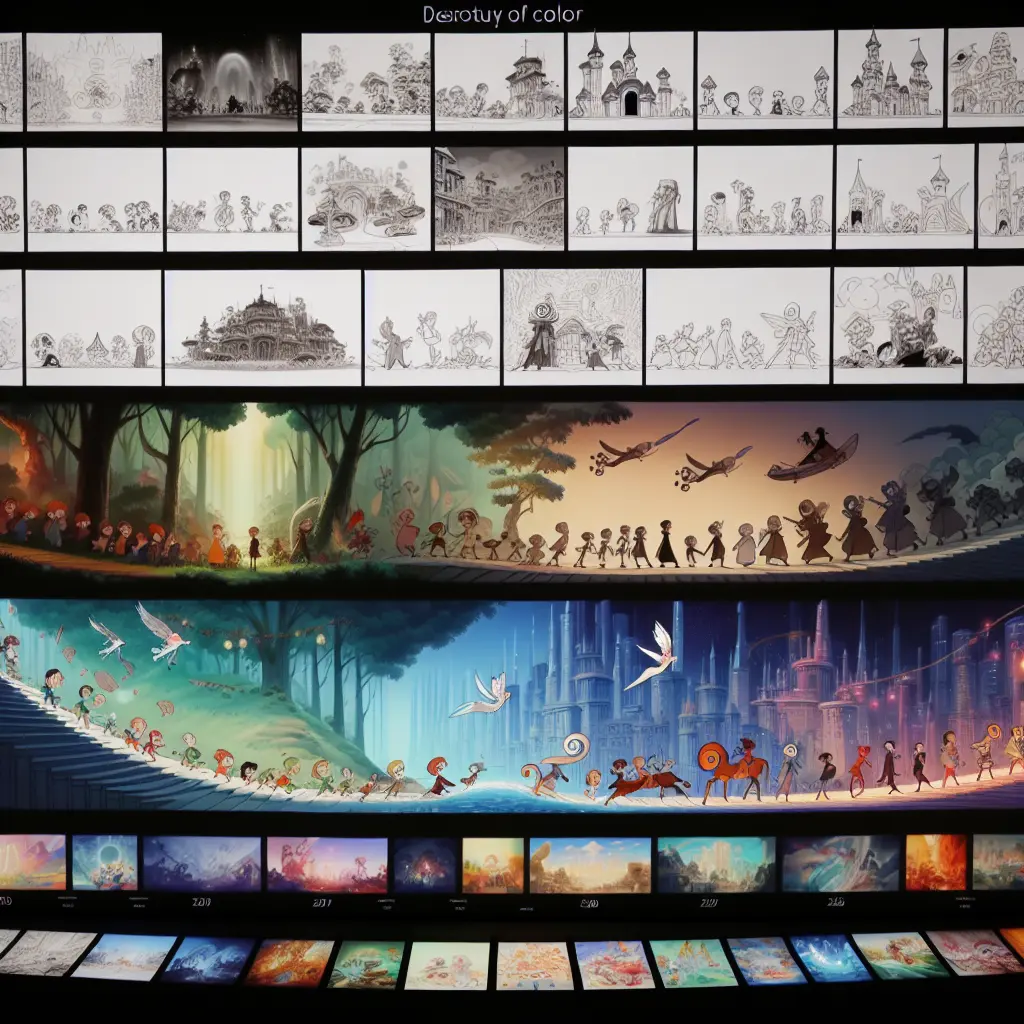
From the mesmerizing swing of Snow White’s dress in the 1930s to the intricate expressions of Elsa in "Frozen," Disney animation has undergone a transformative journey, reflecting not only advances in technology but also changes in audience expectations and artistic styles. This exploration into the evolution of Disney animation reveals how Disney continues to captivate audiences worldwide, blending traditional techniques with cutting-edge technology.
The Dawn of Disney Animation
Disney animation history began with classic Disney cartoons like "Steamboat Willie" (1928), marking the debut of Mickey Mouse. This era utilized traditional Disney animation techniques, where artists drew thousands of frames by hand to create motion. It was labor-intensive and required exquisite precision to bring characters like Mickey and Minnie to life.
Technological Integration in Animation
The Disney animation timeline is dotted with numerous innovations in Disney animation. The introduction of the multiplane camera in 1937, first used in "Snow White and the Seven Dwarfs," allowed for scenes with visual depth unprecedented in animation. This era underlined the studio's commitment to merging creative storytelling with technological advancements, a philosophy that remains at the core of Disney animation studio operations today.
Transition to CGI
The late 20th century witnessed a significant shift with the integration of CGI in Disney films. "Beauty and the Beast" (1991) and "The Lion King" (1994) featured sequences where computer-generated imagery was used alongside traditional hand-drawn animation, showcasing a new era in Disney animation styles. However, it was "Toy Story" (1995), produced by Pixar Animation Studios and released by Disney, that fully embraced CGI, setting a new standard for animated films.
Modern Disney Animation and Technological Advances
The impact of technology on Disney animation became even more pronounced as the company entered the 21st century. Films like "Tangled" (2010), "Frozen" (2013), and "Moana" (2016) not only highlighted advanced CGI but also demonstrated refined storytelling techniques, appealing to both children and adults. The Disney animation techniques employed in these movies, such as the use of sophisticated software to simulate realistic hair and water, illustrate profound Disney animation advancements.
The Role of Disney+ and Streaming Evolution
With the advent of streaming, Disney has adapted to the changing media landscape. The launch of Disney+ has made Disney animated movies more accessible than ever. Today, you can save 15 percent on Disney+ streaming gift cards, making it easier for fans to enjoy both classic and modern titles at home.
Moreover, the introduction of streaming bundles like Disney+, Hulu, and Max provides unparalleled access to a diverse range of content, catering to various tastes and preferences within a family.
Challenges and Controversies
Despite these advancements, Disney+ has not been without its challenges. Recent news reveals a Disney+ password-sharing crackdown, set to start in earnest this September. This move reflects broader industry trends towards stricter account security measures but has also sparked discussions about consumer rights and corporate policies.
Additionally, Disney recently faced a significant cybersecurity incident where hackers reportedly leaked confidential data from thousands of Disney Slack channels. This breach has raised concerns about data security and privacy within major corporations, highlighting the vulnerabilities even leading companies face in safeguarding user information.
Economic Considerations
Disney+’s latest price hike is another development that has contributed to what some call 'subscription fatigue'. As streaming services proliferate and prices climb, consumers are forced to consider which subscriptions are worth continuing—a decision that could shape the future landscape of streaming media.
Artistic Innovations
On a brighter note, Disney continues to push the envelope in cinematic experiences. The release of "Deadpool & Wolverine" scales new heights of cinematic self-awareness, showcasing Disney’s ability to innovate within its narrative and stylistic approaches. This film exemplifies how modern Disney animation can merge traditional character storytelling with contemporary themes and humor.
Conclusion
The evolution of Disney animation reflects broader trends in media production and consumption. From hand-drawn classics to sophisticated CGI masterpieces, Disney has both shaped and adapted to the animation landscape. The integration of advanced Disney animation technology ensures that each generation can experience its own unique set of Disney magic, even as core themes of love, adventure, and self-discovery remain unchanged.
As we look towards the future, it is clear that Disney will continue to innovate, not just in how stories are told but in how they are shared and secured in the digital age. Whether revisiting classic Disney cartoons or anticipating the next big release, audiences worldwide remain enchanted by the artistry and imagination of Disney animation.
Thank you for joining me on this magical journey through Disney’s illustrious animation history. Here’s to many more years of groundbreaking storytelling and technological marvels from our favorite animation powerhouse!
Warm regards,
Natalie Green
For those interested in further exploring this topic, reputable sources such as The Walt Disney Company archives and Animation Studies offer extensive information and scholarly analysis on the evolution of animation techniques and technologies.